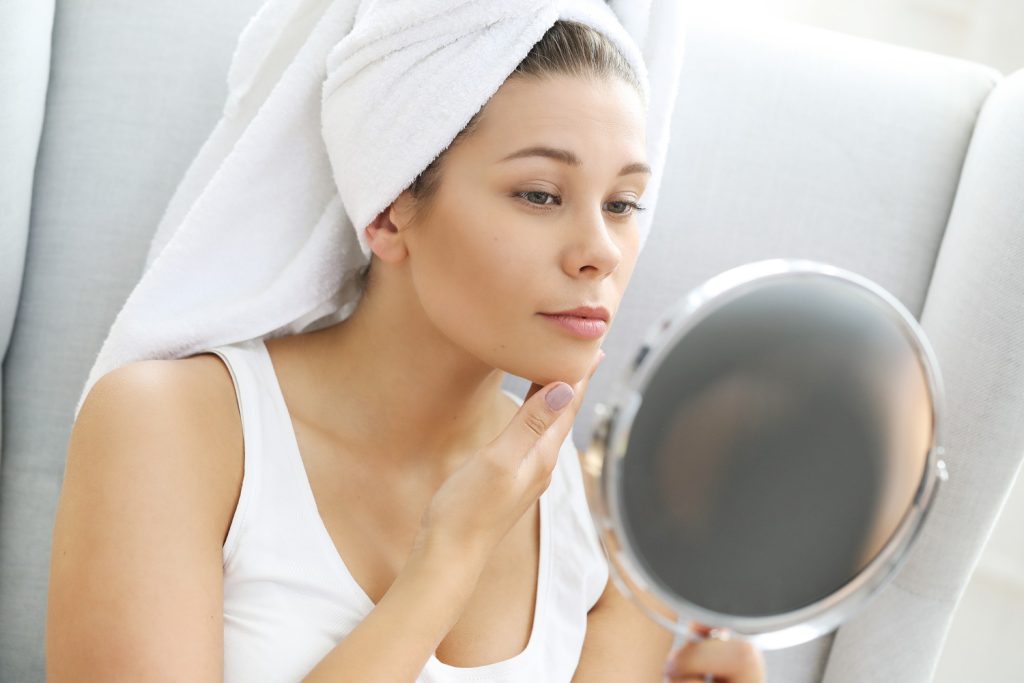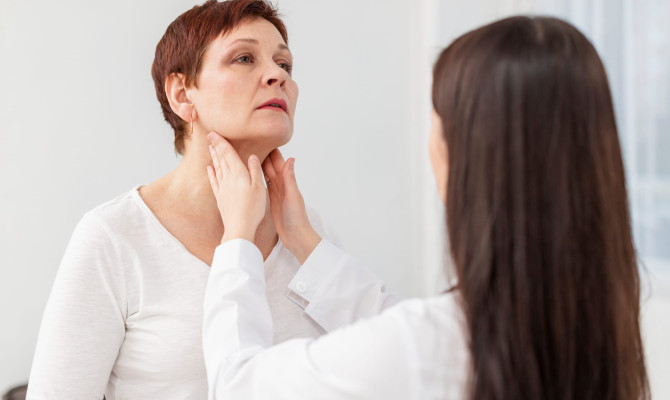Does Dermaplaning Cause Acne? Everything You Need To Know About Dermaplaning

- Acne
- 19 Sep 2023
Introduction
Dermaplaning for skin care
In the ever-evolving world of skincare, one treatment has risen to the forefront, promising smoother, brighter, and more youthful-looking skin. It is called Dermaplaning, making ways among beauty and professionals alike. But what exactly is dermaplaning? Why has it become the go-to solution for achieving a flawless complexion?

In this comprehensive guide, we will delve deep into the world of it, uncovering the science behind this popular skin care procedure and its myriad benefits. Whether you are a skincare enthusiast looking to enhance your blue or a season beauty lover in search of the subsequent breakthrough treatment, join us on a journey through the art and science of Dermaplaning. By the end of this article, you will clearly understand what it entails and who can benefit from it. 1 Introduction| Researched based study from Clinical Dermatology Research Journal
Dermaplaning
What is dermaplaning?
- A specialized surgical blade is used in this minimally invasive cosmetic surgery to exfoliate the top layer of skin and remove dead skin cells and fine vellus hair, sometimes known as “peach fuzz.”
- Trained skin care professionals and dermatologists perform it, and it is famous for its ability to leave the skin smoother, brighter, and more even in texture.1 Dermaplaning| Researched based study from Clinical Dermatology Research Journal
Benefits
Benefits of dermaplaning
- Skin smoothing and exfoliation
- Hair removal
- Improves skincare product absorption
- Better complexion
Skin smoothing and exfoliation
- It is highly effective at exfoliating the skin’s topmost layer, removing dead skin cells and build-up debris.
- Removing dead skin cells can help reduce the visibility of fine lines, wrinkles, and superficial acne scars, producing a more youthful complexion. This procedure leaves the skin feeling silky and smooth.
- By exfoliating the skin, it can also improve skin texture and tone, resulting in a fresh and rejuvenated appearance.
Hair removal
- It is not just about exfoliation; it also effectively removes fine hair, often called “peach fuzz.” This hair removal creates a smoother canvas for makeup and enhances the skin’s overall texture and appearance.
- Unlike some hair removal methods, such as waxing or threading, derma planing is gentle and does not cause hair to grow thicker or darker.
Improves product absorption
- After the procedure, the skin surface is free from dead skin cells and hair, allowing skincare products to penetrate more deeply and effectively. This means the serums, moisturizers, and other products you apply can work more efficiently.
- Enhanced product absorption can lead to better hydration, increased collagen production, and improved results from your skincare routine.
Brighter complexion
- Removing the dull and dead outer layer of skin creates a brighter and more radiant complexion.
- The exfoliating procedure can also aid in minimizing the appearance of hyperpigmentation and uneven skin tone, leaving the skin looking more uniform and radiant.
It’s important to know that while it offers these benefits, it may only suit some. Individuals with certain skin conditions, such as active acne, may need to consult a skin care professional to determine whether it is a convenient option. 3 Benefits| Researched based study from National Library of Medicine ,2 Benefits| Researched based study from Research Gate
Who can benefit from dermaplaning?
- Normal to oily skin
- Dry or sensitive skin
- Acne prone skin
- Mature skin
- Uneven pigmentation
It can benefit many individuals; budget suitability may vary depending on skin types and conditions. Here is a breakdown of who can benefit from it and some considerations for different skin types and conditions:
Normal to oily skin
- Those with normal to oily skin types are typically good candidates.
- It contributes to the removal of extra oil, dead skin cells, and pollutants from the skin’s surface, resulting in a complexion that is smoother and less clogged.
- People with oily skin may find that it enhances the effectiveness of their skincare products by improving absorption.
Dry or sensitive skin types
- While it can benefit dry or sensitive skin, caution should be exercised.
- People with extremely dry or sensitive skin experience increased sensitivity or redness after the procedure.
Acne-prone skin: Does dermaplaning help acne or make it worse?
- It can be helpful for people with acne-prone skin. By scrubbing away, the skin’s outer layer. It might make acne scars look less noticeable and make acne treatments work better.
- It should be avoided during active breakouts or when the skin is inflamed, as it can worsen the condition.
Mature skin
- Those with mature skin due to its exfoliating properties. It can lessen the visibility of fine wrinkles and changes in skin texture brought on by ageing.
- Measures can also benefit from improved product absorption, allowing for better hydration and collagen stimulation.
Uneven skin tone and hyperpigmentation
- People with uneven skin tone and mild hyperpigmentation may benefit from it. Getting rid of the top layer of dead skin cells might help you have skin that is more evenly toned.
- For people with more severe hyperpigmentation concerns, additional treatments may be necessary. 1 Benefits| Researched based study from Clinical Dermatology Research Journal , 2Benefits| Researched based study from Research Gate,3 Benefits| Researched based study from National Library of Medicine
Mechanism
How does dermaplaning work?
The physical action of treatment stimulates several physiological responses, such as:
Collagen production
- The controlled micro-injuries created during the procedure can trigger the skin’s natural healing response, pleading to increase collagen production.
- The essential protein collagen is in charge of preserving the skin’s firmness and suppleness.
Blood circulation
- Additionally, the method can improve blood flow to the area being treated.
- Improved circulation can help nourish the skin, bringing oxygen and essential nutrients to support its health and appearance.
Cell renewal
- Removing the top layer of skin prompts the skin to accelerate cell turnover. This results in the shedding of old, damaged generations of newer ones.
- Additionally, it improves the absorption of skin care products, making serums, moisturizers, and other treatments more effective.
Hair removal
- It not only exfoliates but also removes fine facial hair. 1 Mechanism| Researched based study from Clinical Dermatology Research Journal ,3 Mechanism| Researched based study from National Library of Medicine
Preparation
Preparing for dermaplaning
Skin assessment
- Schedule a consultation with a skin professional or dermatologist.
- During this appointment, discuss your skincare goals, concerns, and any medical conditions or medications that might affect the procedure’s suitability.
Skin type analysis
- Your skin type and condition will be to determine if dermaplaning is appropriate for you.
- They will consider factors like sensitivity, history of skin conditions, and any active acne breakouts.
Customized treatment plan
- Based on the assessment, a treatment plan will be created.
- This may include the number of sessions needed, any specific post-treatment instructions, and recommendations for complementary skin care products. 4 Preparation| Researched based study from Research Gate
Pre-treatment skincare routine
Avoid sun exposure
- Protect your skin from excess Sun exposure for at least two weeks before the appointment.
- Sunburn or tanned skin can be more prone to irritation during the procedure.
Discontinue certain products
- Stop using skin care products containing harsh exfoliants, retinoid, or Alpha hydroxy acids (AHAs) at least one week prior.
- These items may increase the sensitivity of your skin.
Avoid waxing or using hair removal creams
- For at least a week previous to the treatment, refrain from waxing or applying depilatory creams on the treatment region.
Cleansing
- Gently cleanse your face on the day of the procedure to remove any makeup, oils, or residues. Arrive at your appointment without wearing makeup.4 Preparation | Researched based study from Research Gate
Procedure
Dermaplaning procedure
Preparation
- The skin is thoroughly washed to get rid of any pollutants, oils, or makeup.
- To reduce the possibility of infection, a clean canvas must be used as the foundation.
Tool selection
- A sterile, surgical-grade scalpel or blade is used. This blade is specifically designed for this procedure and is much sharper and fine than a regular razor.
- It effectively removes the top layer of skin and fine hair without causing cuts when used by a practitioner.
Sterility
- Maintaining a sterile environment and using clean tools are crucial to prevent infection and ensure safety.
Technique
- The practitioner holds the blade at a 45-degree angle and gently glides it across the skin surface.
- They use short, controlled strokes in the direction of hair growth. This motion effectively removes dead skin cells and fine hair.
Exfoliation
- As the blade moves over the skin, it takes off the outermost layer of dead skin cells, revealing a smoother, fresher skin beneath.
Completion
- The practitioner continues this process until the entire treatment area is addressed, ensuring that all areas are treated evenly.
- Once the procedure is complete, they apply a soothing moisturizers or post-treatment skin care products to nourish and protect your newly exposed skin.4 Procedure| Researched based study from Research Gate
Advantages

Advantages of dermaplaning
Minimal discomfort
- In general, it is widely accepted and regarded as being rather painless.
- As the blade glides over your skin, you might experience a tingling or scraping sensation, but it shouldn’t hurt.
Duration
- A session typically takes 30 to 45 minutes, depending on the area and the practitioner’s expertise.
Hair removal
- You will notice the removal of fine hair for a smoother complexion, which can enhance the makeup application.
Exfoliation
- You may hear a faint scraping sound, which is entirely normal. This sound indicates the removal of dead skin cells.
Immediate results
- You will notice results right away, which is one of the advantages. Your skin will probably look softer, brighter, and more radiant after the procedure.
No downtime
- It typically has little to no downtime. After the operation, you can immediately get back to your regular routine.
- There might be some redness, but it should go away in a few hours to a day.
Recommended frequency
- For optimal results, many people choose to have these treatments every three to four weeks as part of their skincare routine.
Aftercare
Post-dermaplaning skin care tips
After the treatment are essential to ensure your skin meets and maintains its benefits.
Moisturize
- Apply a gentle, hydrating moisturizer to your skin immediately after the procedure and continue using it regularly in the days following.
- It helps Soothe and protect the newly exposed skin.
Avoid direct sun exposure
- Prolonged use of tanning beds and the sun for at least a week after therapy.
- If you must be outside, put on safety gear like a wide-brimmed hat and sunglasses.
Sun protection
- After dermaplaning, it’s crucial to shield your skin from the sun’s UV rays.
- Your newly exposed skin may be more sensitive to sunlight, so wearing sunscreen is crucial to prevent damage.4 Aftercare| Researched based study from Research Gate
Don’t use harsh products
- Avoid using harsh exfoliants in skin care products for a few days following the procedure.
Gentle cleansing
- Use a mild, nonabrasive cleanser to wash your face for several days after the procedure. Avoid scrubbing or using hash clothes or brushes.
- When washing your face, use lukewarm water instead of boiling water.
Stay hydrated
- Drink plenty of water to keep your skin hydrated on the inside and out.
Skip cosmetics
- After the treatment, refrain from wearing makeup for the rest of the day.
- If you must wear makeup, use clean brushes and applicators to minimize the risk of infection.4 Aftercare| Researched based study from Research Gate
Tips
Tips for managing dermaplaning discomfort
Redness
- Some patients may notice little redness right away following the procedure.
- It normally passes within a few hours to a day and is normal. You can apply a gentle moisturizer to alleviate redness.
Tingling or tightness
- You might experience a slight stiffness or tingling in your skin.
- As your skin heals, this is typically only temporary and should get better.
Avoid touching
- Refrain from touching your face unnecessarily after the procedure to prevent introducing bacteria to the treated area.
Cold compress
- Applying a cold compress can help relieve aches and minor swelling if you feel them.
Follow post-treatment instructions
- Always follow the practitioner’s detailed directions. They may have customized advice based on your skin needs.4 Tips| Researched based study from Research Gate
Side Effects
What are the risks of dermaplaning?
- Redness
- Irritation
- Breakouts
- Uneven pigmentation
- Infection
Despite being usually regarded as harmless, it can have some negative effects, such as:
Mild redness
- This is normal right away following the surgery but normally goes away within a few hours.
Skin irritation or sensitivity
- It may occur in some people for a brief period of time.
Breakouts
- In rare cases, it can lead to acne breakouts, especially if proper post-procedure care is not followed.
Uneven pigmentation
- There is a small risk of uneven pigmentation, particularly if the skin is exposed to the sun without adequate protection after the procedure.
Infection
- Although infections are rare, there is a minimal risk of disease if proper hygiene and sterile instruments are not used.
To reduce these hazards, having it done by a qualified expert is crucial. Also, follow post-operative care instructions to reduce the likelihood of side effects.6 Side Effects| Researched based study from Plastic and Reconstructive Surgery,5 Side Effects| Researched based study from National Library of Medicine
Why does Derma planing cause acne?
It does not typically cause acne. Following it, one could develop acne outbreaks for the following reasons:
Irritation following treatment
- Following the procedure, the skin may become more sensitive and irritable. If proper post-treatment care is followed, this could lead to breakouts.
Clogged pores
- If the tools or products used during the procedure are not adequately sterilized, they can introduce bacteria to the skin, potentially leading to clogged pores and acne.
Incorrect aftercare
- Using the wrong skin care products or failing to keep the skin clean during the procedure can disrupt the skin’s balance and contribute to acne.
Existing skin conditions
- If you have underlying skin conditions such as acne-prone skin, dermaplaning may temporarily exacerbate the condition as it removes the top layer of skin cells. 6 Side Effects| Researched based study from Plastic and Reconstructive Surgery,5 Side Effects| Researched based study from National Library of Medicine
FAQs
FAQs on dermaplaning
Is it normal to break out after dermaplaning?
- Breakouts can occur but are not always normal. If the procedure is not done correctly or the tools are not properly sanitized, it can lead to breakouts or skin irritation.
Is Dermaplaning okay if you have acne?
- Yes, it can be done on individuals with acne, but it should be approached cautiously and ideally under the guidance of a Dermatologist or skin care professional. Avoid the procedure over active acne lesions, especially if they are inflamed or have pustules. It might not be the best choice for you if you have severe or cystic acne.
Does dermaplaning cause stubble or cause hair to grow back thicker?
- It can result in the temporary appearance of stubble, but it is not hair Growth. Since it does not affect the hair follicle, it will grow naturally. As the hair begins to go back, it may initially appear blunt or struggling because it has been cut at the surface.
- This can create the illusion of stubble for a short period, but it is not the same as thicker hair growth. It is usually temporary, and the hair will eventually return to its natural texture and appearance as it grows.
What are the mistakes for dermaplaning?
- It is a delicate procedure, and mistakes can lead to skin irritation and other issues.
- Lack of proper training, using the wrong tools, applying too much pressure during the course, neglecting skin preparation before the process, neglecting post-procedure care, overdoing it frequently, performing it on sunburned, irritated, or overly sensitive skin, ignoring allergies or sensitivities are some of the mistakes to be avoided.
Any feedback on this article?
 This Articles content was accurate
This Articles content was accurate Very Informative Article
Very Informative Article I have a question or a comment
I have a question or a comment
 This article contains inaccurate content
This article contains inaccurate content This article was not helpful
This article was not helpful I have a question or a comment
I have a question or a comment
We appreciate your helpful feedback!
Checkout our social pages
References
-
Clinical Dermatology Research Journal
Introduction | Dermaplaning | Benefits | Mechanism
-
Research Gate
Benefits
-
National Library of Medicine
Benefits | Mechanism
-
Research Gate
Preparation | Procedure | Aftercare | Tips
-
National Library of Medicine
Side Effects
-
Plastic and Reconstructive Surgery
Side Effects




































